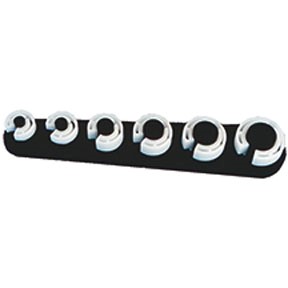Flat Roofing Systems: Choosing the Right One for Your Building
Assessing Your Flat Roofing Options
Flat roofing is a popular choice for many buildings due to its cost-effectiveness and versatility. Selecting the appropriate flat roofing system for your building is a critical decision that influences not only the aesthetic appeal but also the long-term durability and maintenance costs.
Understanding the Types of Flat Roofing SystemsBuilt-Up Roofing (BUR): The Traditional Multi-Layered Approach
BUR is one of the oldest and most reliable types of flat roofing systems. It consists of multiple layers of bitumen and reinforcing fabrics that create a finished membrane. Ideal for its proven track record, BUR offers durability and a resistance to foot traffic.
Modified Bitumen Roofing: Combining Accessibility with Performance
Modified bitumen roofing systems are enhancements of the classic BUR, incorporating polymer-modified bitumen layers for greater flexibility and temperature resistance. It can be applied using various techniques, including heat-welding and cold-adhesive methods.
Single-Ply Membranes: The Efficient Modern Standard
Single-ply membranes, such as EPDM, PVC, and TPO, are lightweight, versatile roofing solutions that are easier to install than their multi-layered counterparts. Their reflectivity can contribute to higher energy efficiency for the building.
Innovations in Flat RoofingGreen Roofing: A Sustainable Twist on Flat Roofs
Green roofs, where vegetation is grown on top of a waterproofing membrane, are transforming flat roofing into eco-friendly spaces. They help manage stormwater runoff, improve building insulation, and enhance urban biodiversity.
Solar Roofing: Harnessing Energy from Above
With the rising interest in sustainable energy sources, integrating solar panels into flat roofing systems is becoming increasingly popular. Solar-ready roofs can be designed to support and optimize the use of photovoltaic cells.
Factors to Consider When Choosing a Flat Roofing SystemEvaluating Roof Usage
Consider how your roof will be used. If it will frequently support foot traffic or house HVAC units, systems like BUR with higher durability might be ideal.
Climate Considerations
Your local climate greatly affects the choice of flat roofing, as some materials perform better than others in extreme heat, cold, or fluctuating temperatures.
Budget Constraints
Budgetary considerations are essential, as there are cost variances not only in the initial installation but also in ongoing maintenance and potential repairs.
Expert Installation is Key
Regardless of the system you choose, professional installation by skilled and experienced roofing contractors is paramount. This ensures that your roof is installed correctly, adheres to local building codes, and is backed by a solid warranty.
Maintaining Your Flat Roof for Longevity
Regular inspections and maintenance are the lifeline of any flat roofing system. A proactive approach to potential issues, such as ponding water or membrane tears, can prevent them from escalating into costly repairs or replacements.
Enlist Flatline Roofing Pros for Your Building’s Needs
When the time comes to make an informed decision about your flat roofing options, rely on the expertise of the professionals at Flatline Roofs. They can guide you through the intricate details of each system, helping you find the perfect match for your commercial and residential building’s.


